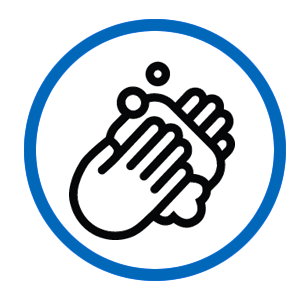Safe disposal of feces could prevent over 800,000 deaths a year due to sanitation-related diarrhea.1The Human Waste
WaterAid and Tearfund
2016 This is a habitual behavior that applies to adult, child and baby feces and must be practiced on all occasions.

Safe Disposal of Human Feces
Family members safely dispose of human feces
Key Points from Global Research
- Ensuring households have appropriate, accessible, affordable sanitation options can enable latrine construction and use.
- Leveraging powerful motivators like pride and respect for household members, guests and neighbors can increase latrine use and maintenance.
Behavior Profile Sample: Safe Disposal of Human Feces
A Behavior Profile is a summary analysis of each behavior. This sample draws from global evidence and illustrates the result of using the Create Behavior Profiles Tool to analyze factors, supporting actors and strategies and to ensure logical pathways exist between strategies proposed and factors related to the practice of the behavior. This sample may be used as a starting point or reference for creating Behavior Profiles.
| Improve maternal and child survival | |
|
Family members safely dispose of human feces Percentage of households with improved and non-shared toilet facilities
|
Behavior Analysis |
Strategy | ||
|---|---|---|---|
STEPSWhat steps are needed to practice this behavior?
Click on any box |
FACTORSWhat factors may prevent or support practice of this behavior? These should be analyzed for each country context.StructuralAccessibility: Products needed to build an improved latrine are unavailable locally or in small quantities Accessibility: Physical constraints (e.g. height of ground water, hardness of ground) make building a latrine difficult Accessibility: Families have insufficient resources to build a latrine SocialNorms: No neighbors have a latrine, so families do not understand why they need one InternalAttitudes and Beliefs: Families do not believe baby feces is dirty and do not throw it into the latrine Attitudes and Beliefs: Families prefer to use the outdoors where the air is fresh Attitudes and Beliefs: People feel proud and prestigious when they think they can have their own household latrine Knowledge: Families do not know how to build an improved latrine |
SUPPORTING ACTORS AND ACTIONSWho must support the practice of this behavior?InstitutionalPolicymakers: Adopt open defecation free (ODF) policy and sanitation regulations for the country CommunityCommunity Leaders: Build institutional latrines (schools, clinics) Community Leaders: Support local sanitation marketing efforts and construction training to improve accessibility HouseholdFamily Members: Save a portion of available income for sanitation needs |
POSSIBLE PROGRAM STRATEGIESHow might we focus our efforts based on this analysis?Enabling EnvironmentFinancing: Offer financing or credit mechanisms for household sanitation improvements and sanitation businesses Partnerships and Networks: Form surveillance cadres (government, international and local NGOs) to track ODF communities Systems, Products and ServicesProducts and Technology: Investigate new sanitation technologies for geographically constrained situations Quality Improvement: Facilitate improved private-sector markets to increase access to latrine options and construction, small-scale supplies, or delivery options Demand and UseCommunication: Use regular community forums to share data and progress on ODF status and discuss challenges Skills Building: Train local cadres of masons and builders |
Global Status of Accelerator Behavior
Percentage of households with improved and non-shared toilet facilities
The DHS Program Indicator Data API, The Demographic and Health Surveys (DHS) Program, WHO/UNICEF Joint Monitoring Programme (JMP) for Water Supply and Sanitation
